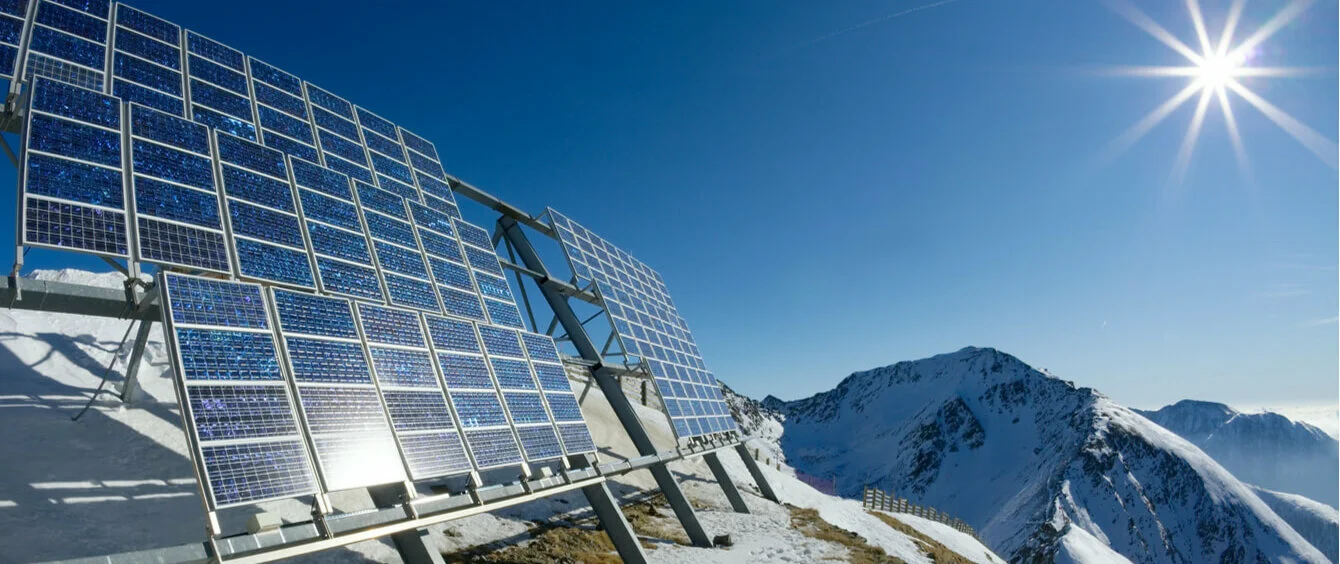Winter can be an undeniably gloomy affair in central Europe. Snow, rain, thick cloud cover – only now and again does the sun show its face. Last winter in Munich, for example, there were no more than 200 hours of sunshine over the course of three months – i.e. on average only little more than two hours a day. This doesn’t only affect people’s moods, but can also negatively affect power generation from renewables.
In winter, solar systems generate the lowest quantities of electricity, despite the fact that demand is at an annual high. Research conducted by Swiss scientists has now discovered how solar systems can better bridge annual fluctuations of electricity demand. The systems would need to be built up in the mountains.
Less surface area needed in the mountains
Research conducted by the EPFL and the WSL Research Institute for Snow and Avalanche Research has received media coverage by publications such as Die Neue Züricher Zeitung. Scientists researched how power generation changes at different altitudes and different positioning angles of the solar panels through the seasons.
The result: Solar farms in the mountains need less surface area than photovoltaic systems in the lowlands. In addition, they produce more power during the winter months and can therefore better accommodate fluctuating electricity demand.
Stronger solar radiation and less clouds
The researchers identified three reasons for the improved productivity above the snow line: The solar radiation is notably more intense at higher altitudes. The cloud cover is less of an issue than in the lowlands. And the snow reflects the sunshine. However, the solar panels would have to be set up much steeper than those located at lower altitudes to benefit from the reflection, which conveniently also prevents the snow from settling on the systems.
Although the study focussed on Switzerland, the scientists say that the results can be applied to comparable regions.
